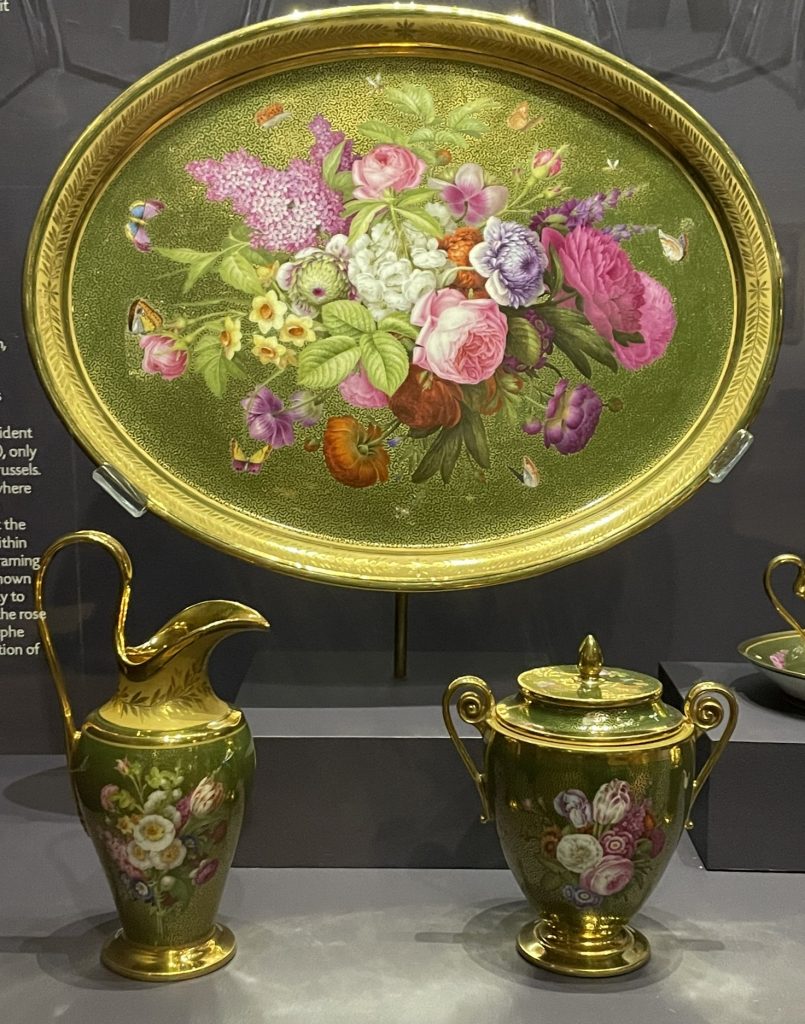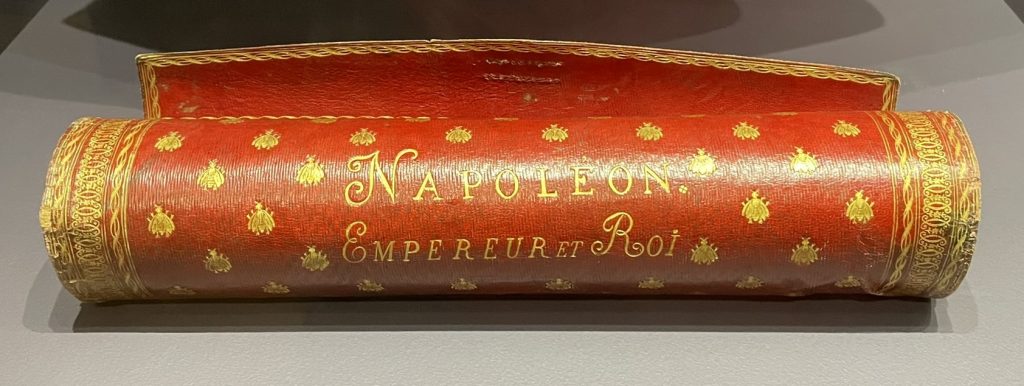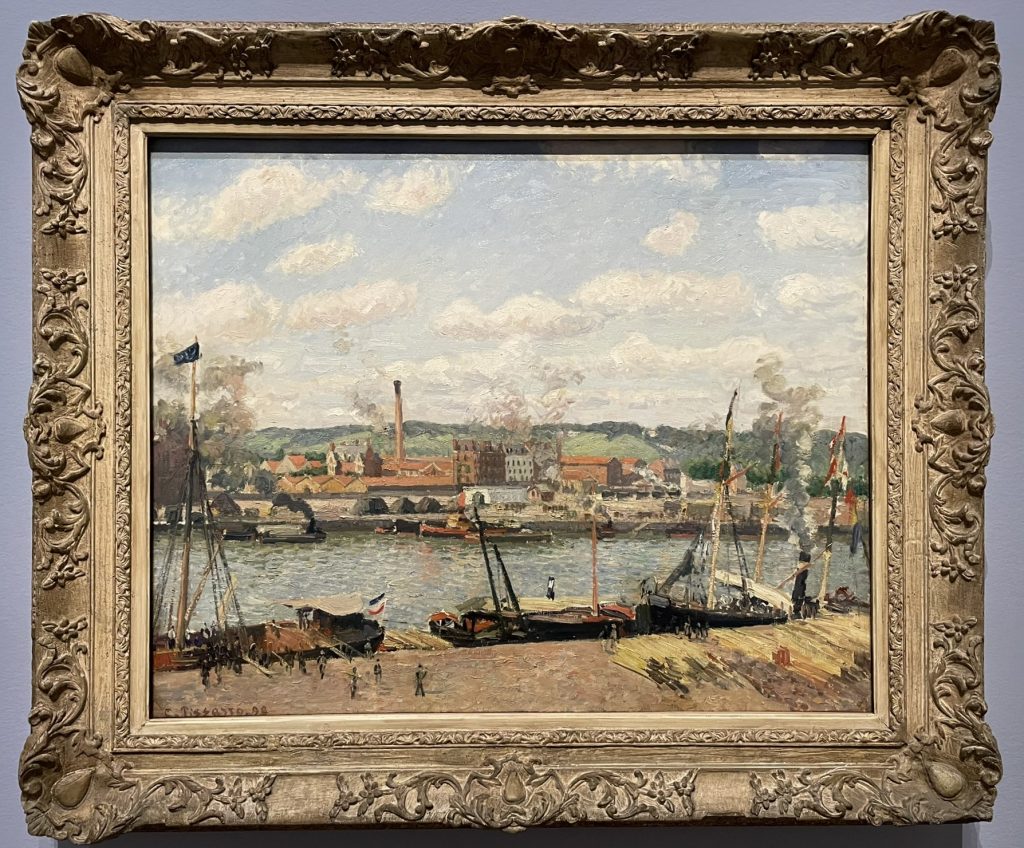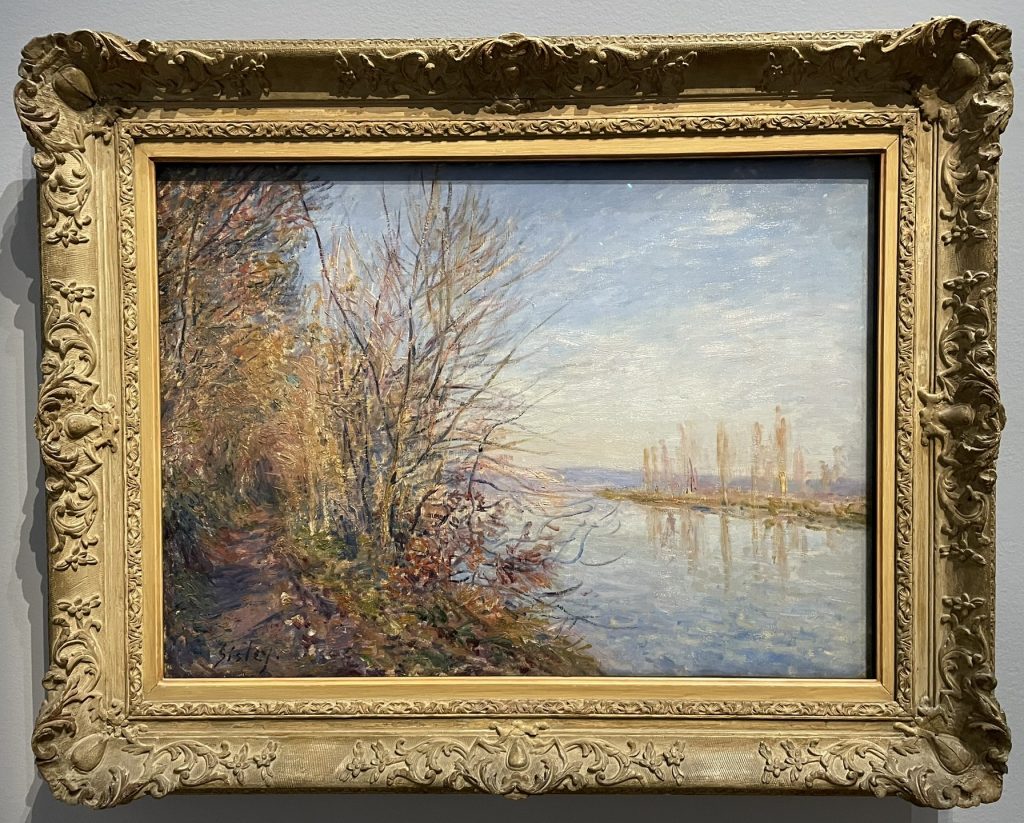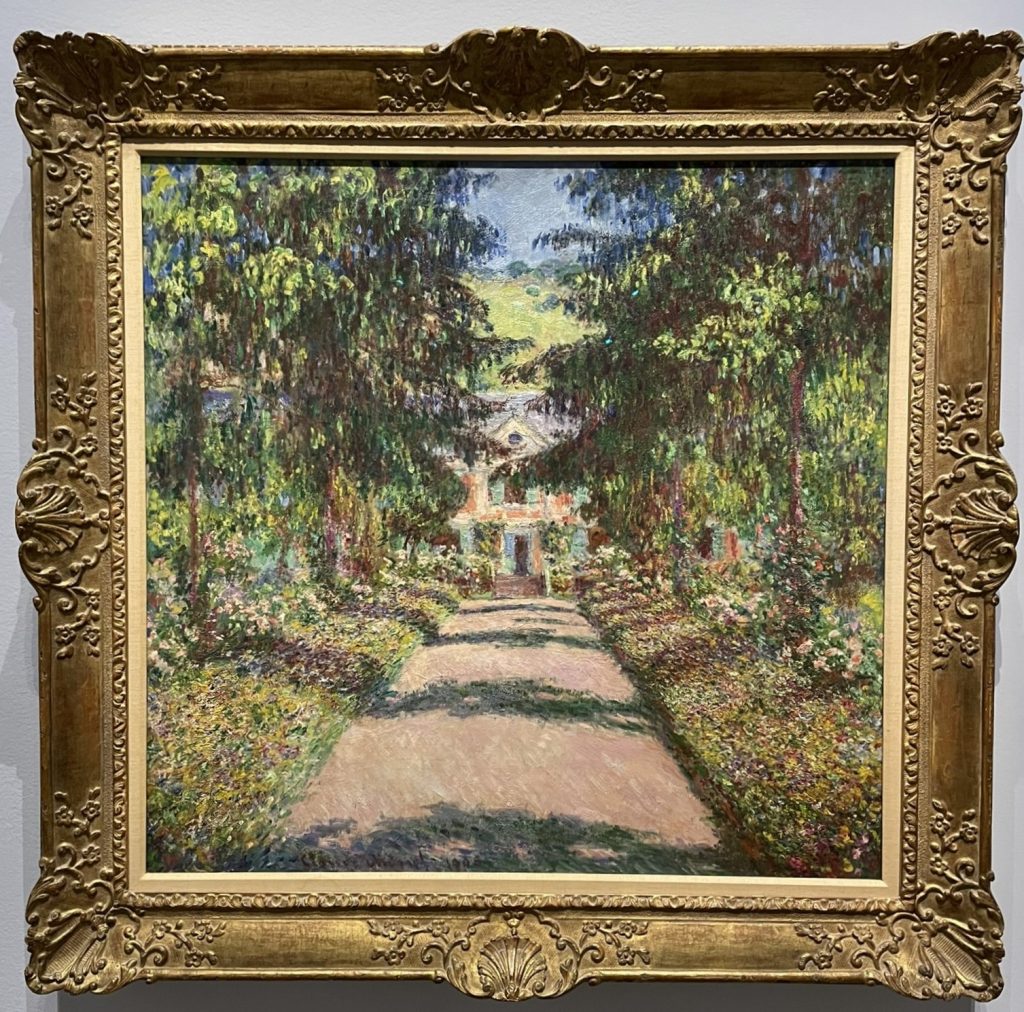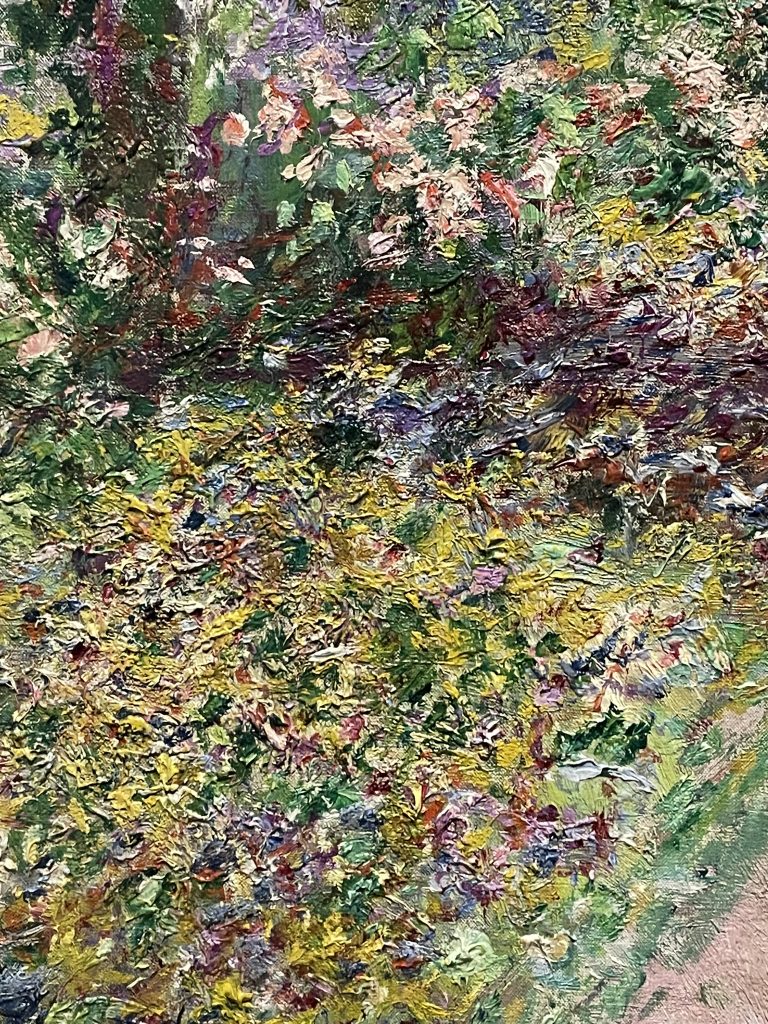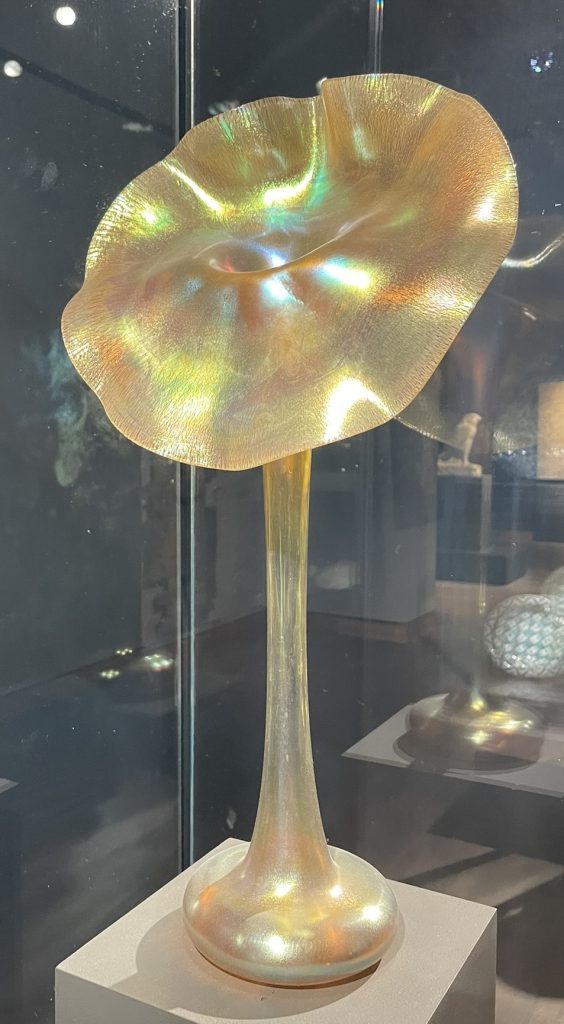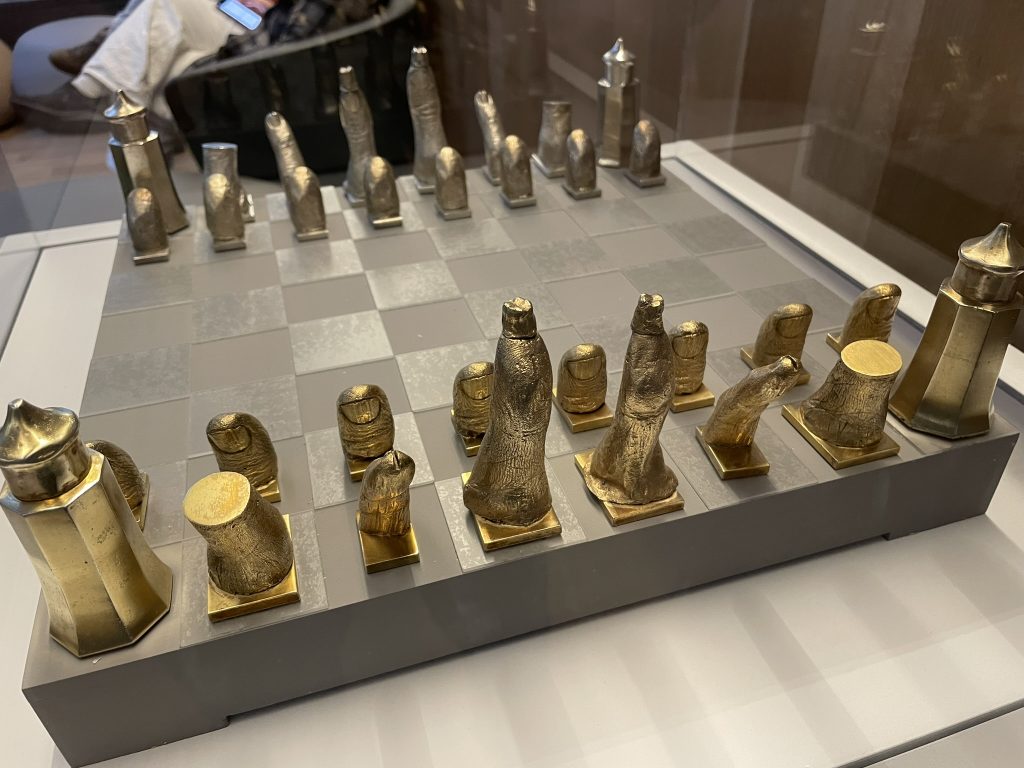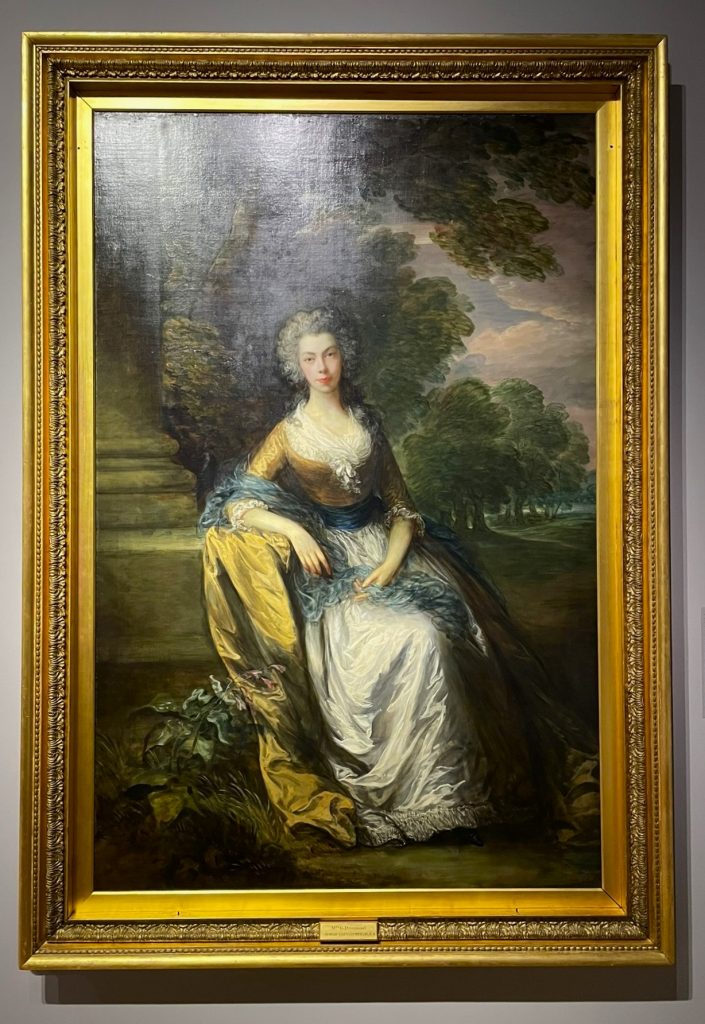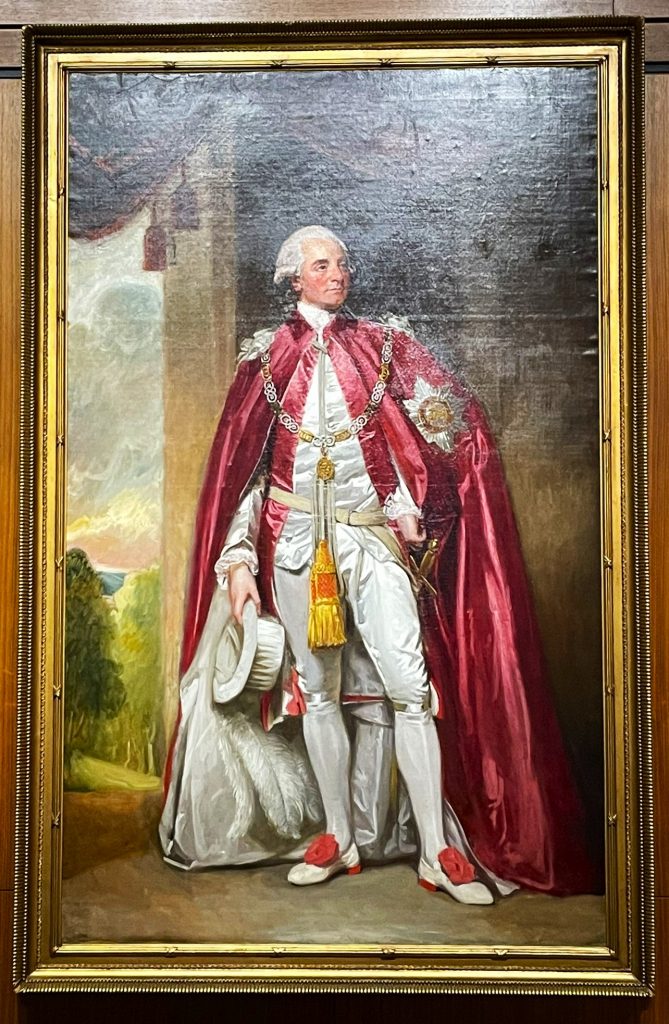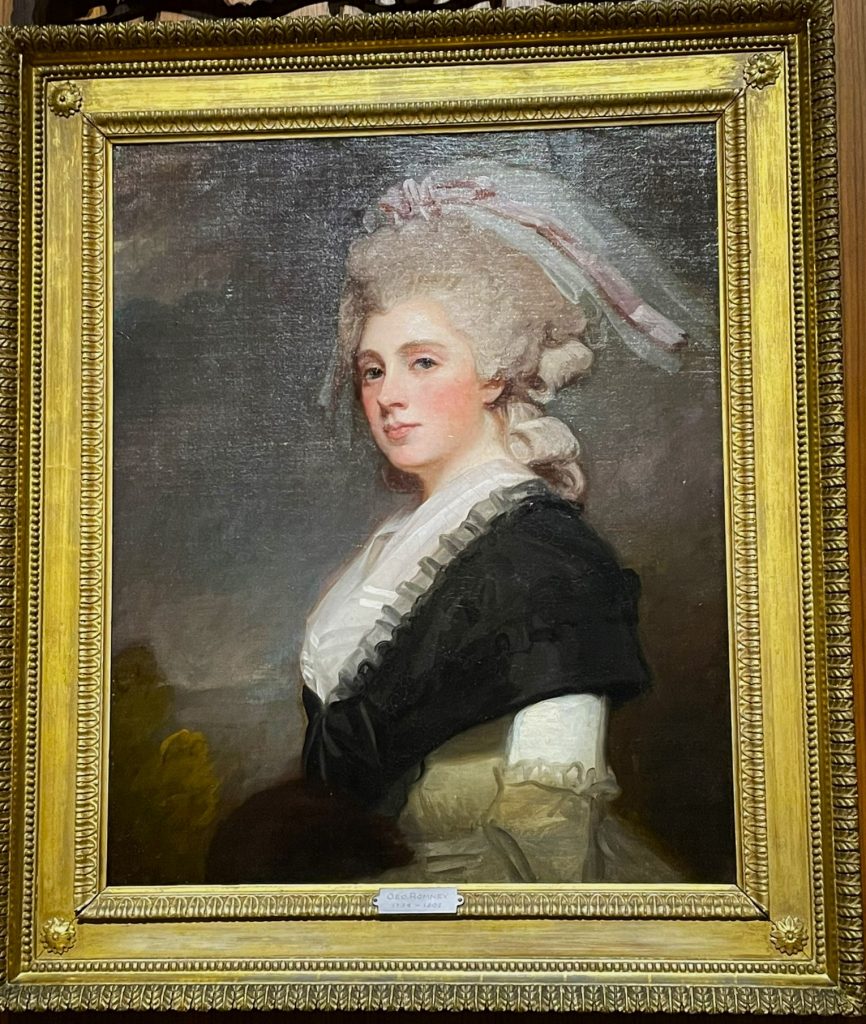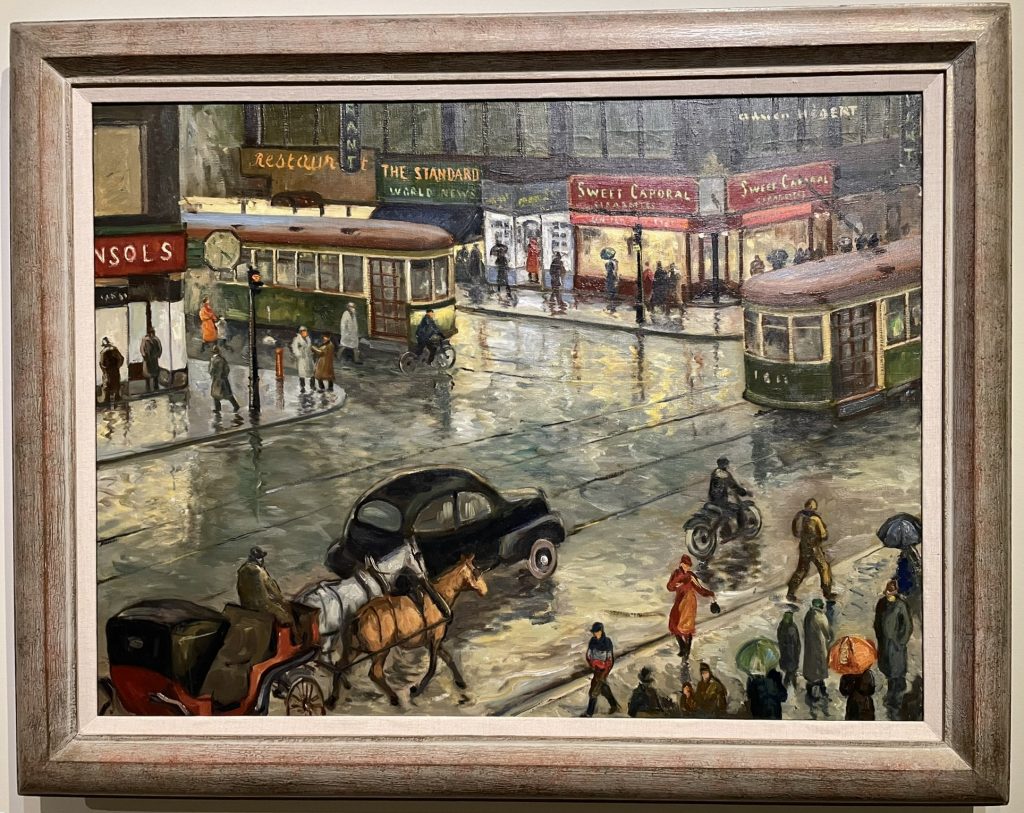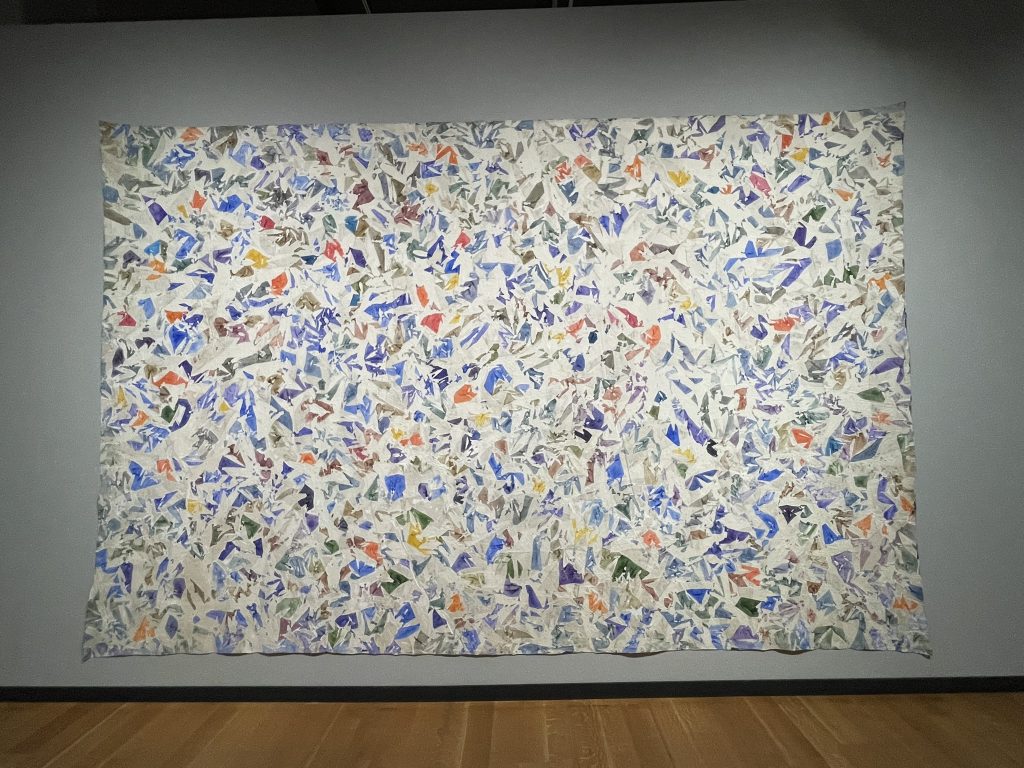The Montreal Museum of Fine Arts (MMFA) was an absolute nightmare in terms of how it was laid out. It has five –– five – buildings and 140,000 square feet of exhibit space. If it had been clear how to move through it, maybe all that space would have been okay.
As it turned out, the multiple buildings did not connect on every level (as far as we could tell), but rather through tunnels under the streets. As a result, you have to go up and down a lot of separate elevators, stairs, or escalators. But it is never clear when you cross from one building to another, so we never knew where we were or where we had been.
On top of that, as you walked through a room, it likely had multiple entrances to other rooms, so it was impossible to keep track of what you had seen or not. I kept feeling like we had missed things, but was never sure how to get back, or even if we should go back. Why do museums do this? It just makes for a frustrating experience. Even worse, there were no maps to be found.
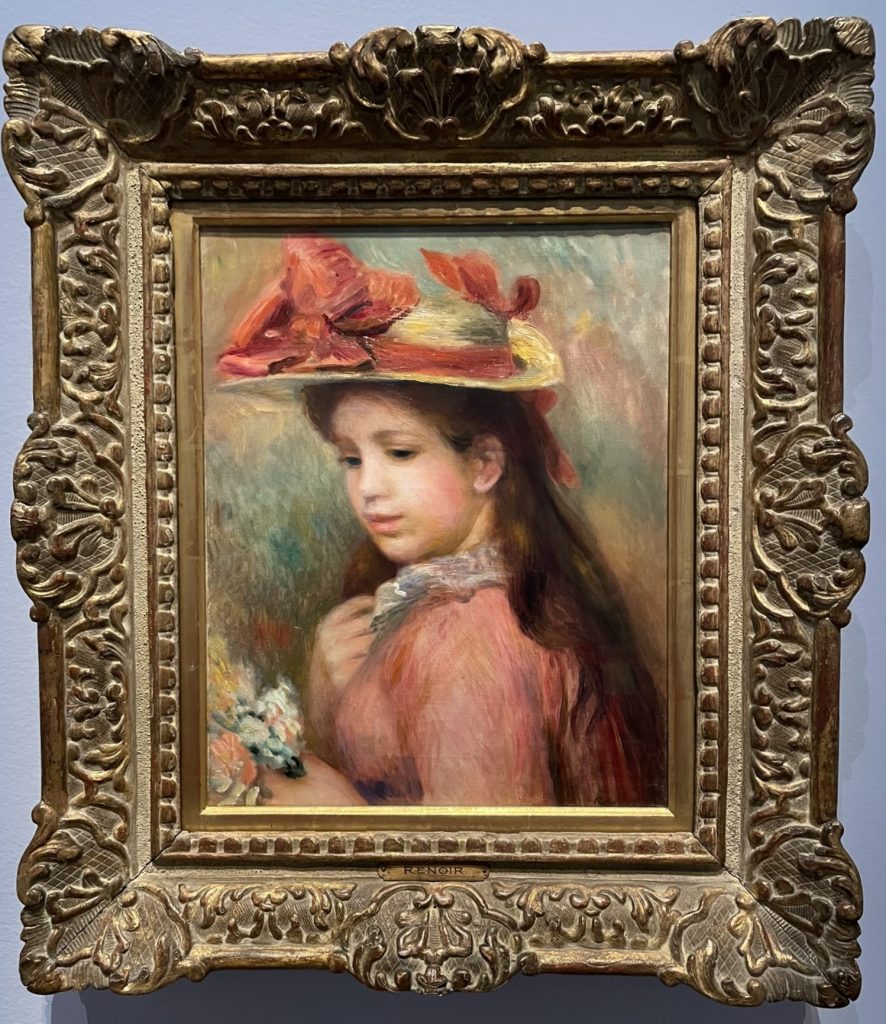
It didn’t help we had gone late in the day and were tired. I was ready to give up, but Doug repeatedly found us something new and interesting just by randomly persevering.
The origins of the MMFA date to 1860 (though not at this location –– or should I say locations). Today it has 47,000 items in its collections.
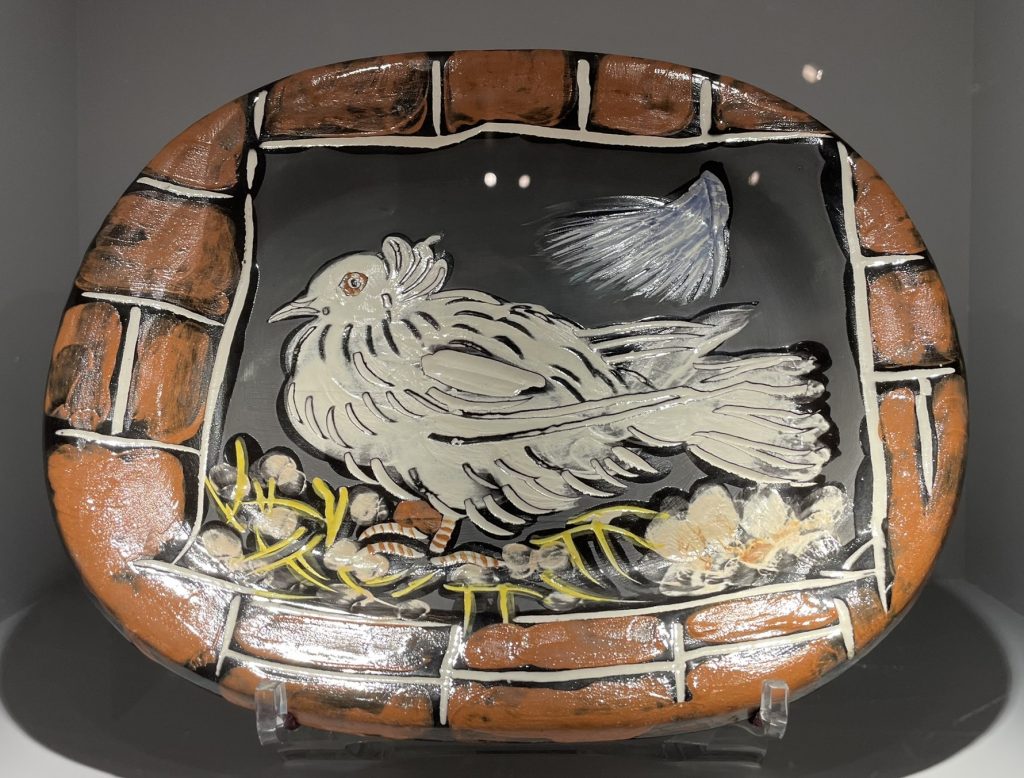
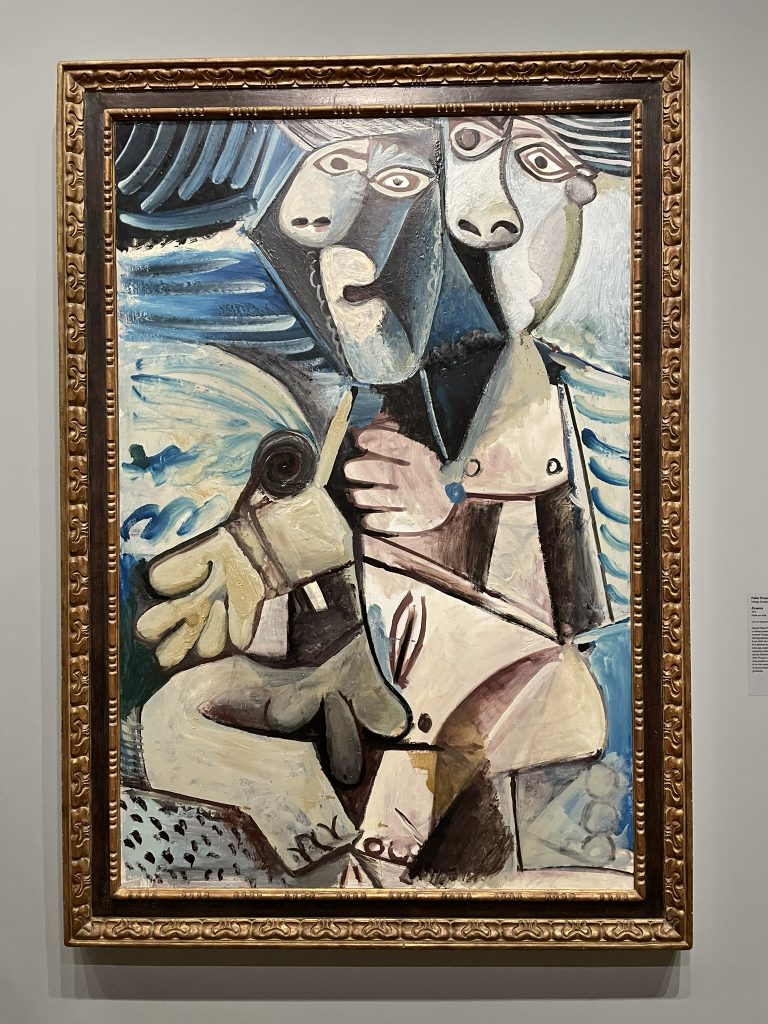
While researching the museum after the fact, I learned that it was the victim of the largest art theft in Canadian history, “The Skylight Caper.” In 1972, thieves entered through a skylight that was under repair (inside job, anyone?) and stole jewelry, figurines, and 18 paintings (including Gainsborough and Rembrandt) worth nearly $50 million in today’s dollars. The thieves returned one painting as a good faith gesture in their ransom negotiations, but things fell apart and the remainder were never recovered and the trail has long since gone cold.
Even worse, the museum used the insurance proceeds to buy a Peter Paul Rubens painting, The Leopards. However, it was later discovered that the red pigments in the painting were not mixed until four decades after Rubens had died, so that painting remains in storage. Where’s the Netflix documentary on this heist?
The cover photo to this post is Jubilant Red, Jean McEwen, 1963.
